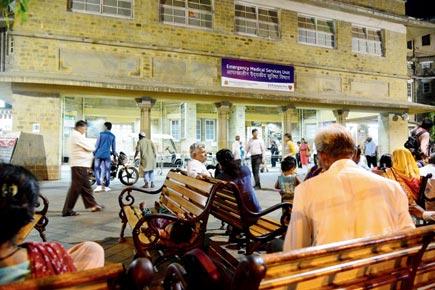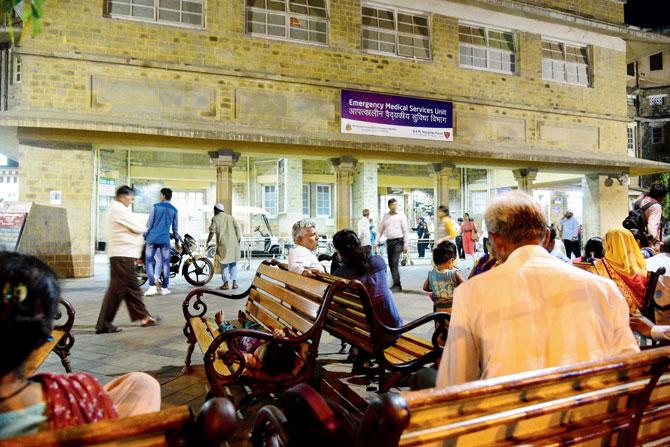After six days of struggle, while patients finally have a reason to smile, it's the doctors who are back at work that now have to face even tougher conditions, with a massive backlog of patients waiting to be attended to


Patients wait outside KEM Hospital as doctors started getting back to work on Friday night. File Pic
ADVERTISEMENT
After six days of struggle, while patients finally have a reason to smile, it's the doctors who are back at work that now have to face even tougher conditions, with a massive backlog of patients waiting to be attended to. On Saturday alone, the footfall of patients at the city's major hospitals rose by nearly 30 per cent. This figure will only increase over the coming days.
During the strike, the number of visitors to the out patient department had fallen, as senior doctors were only looking into emergency cases. But gradually, since Saturday, the footfall of patients has surged. Sources said that around 50-60 per cent of the backlog was witnessed at the major hospitals - Sion, KEM, Nair and Cooper. These four normally see around 18,000 patients a day. On Saturday, this figure rose to 23,000. To handle the rush of patients, many doctors worked shifts of 20 hours, as compared to their regular 14-hour shifts.
"We had to extend our timings on Saturday, as we had a large number of patients who didn't get treatment during the strike. Some doctors had to do a shift of around 20 hours just to provide extra hands," said a resident doctor from KEM hospital.
"The rush of patients on Sunday was less, but more patients will come gradually. So, the number of patients on weekends generally stays less. But the pressure will increase from Monday," said Dr Avinash Supe, dean of KEM hospital and director of major hospitals. mid-day visited KEM on Sunday and found that security had been beefed up too. For the past six days, while the strike was going on, the working hours of the security guards had also been extended to 10-12 hours for the safety of the senior doctors on duty.
"We were instructed to stay on high alert after the doctors started protesting. It was very tough to handle the patients who came for treatment but were unaware of the mass bunk. We couldn't even our seats, and had to work for more than 10-12 hours during the strike. Now, thankfully, everything is under control," said a guard stationed at the hospital.
But resident doctors are still fearful that their demands might not be met, as the government has made tall promises in the past that went unfulfilled. "We have been demanding for years to make it a policy to restrict the number of relatives to two per patient. This will help to control mass attacks on doctors on duty. Plus, they need to increase the number of security guards along with CCTV. These are basic demands we have for the security of doctors who save people's lives," said Dr Sagar Mundada, president of the youth wing of the Indian Medical Association.
 Subscribe today by clicking the link and stay updated with the latest news!" Click here!
Subscribe today by clicking the link and stay updated with the latest news!" Click here!






